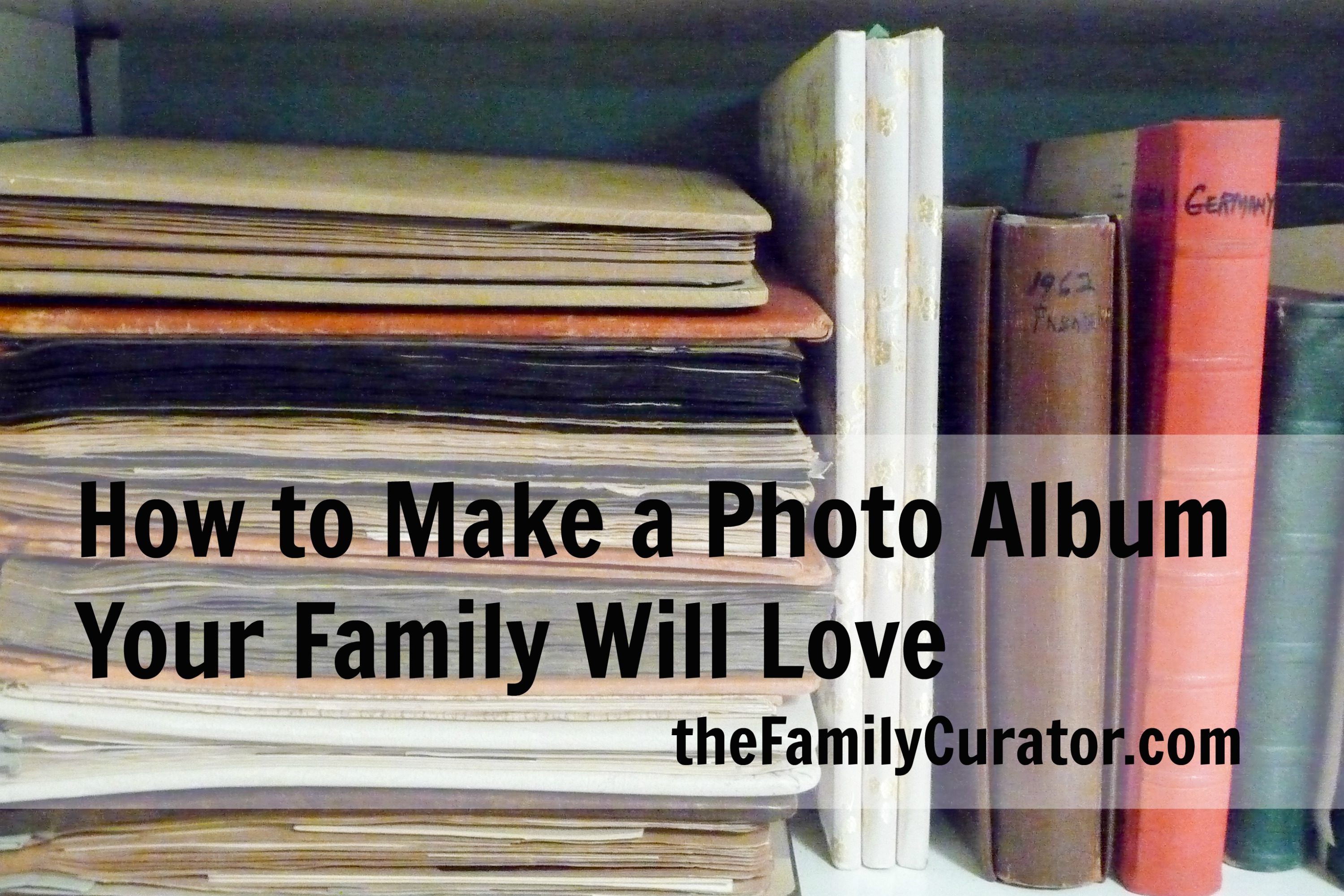 A non-genealogist recently asked “what should I do with a bunch of old pictures?” They were mostly snapshots left loose in a box and tucked inside the original film-processing envelopes. He wasn’t interested in family history, and without names or notes the photos were meaningless to him.
A non-genealogist recently asked “what should I do with a bunch of old pictures?” They were mostly snapshots left loose in a box and tucked inside the original film-processing envelopes. He wasn’t interested in family history, and without names or notes the photos were meaningless to him.
In contrast, people rarely ask what they should do with an old photo album. You don’t have to be a genealogist to value and preserve a picture book created by your ancestor.
Sometimes snapshots are slapped in those awful “magnetic” albums without much thought to chronology or event, but we still save them and try to rescue those deteriorating photos. Other times, albums are artistically designed with clever and useful captions. Either way, a photo album is an heirloom, while loose snapshots are one trash can from oblivion.
Why Albums?
Photo albums, scrapbooks, diaries, and journals all share a common goal — to preserve and make sense of the past. A diarist records daily weather and crops year after year to track patterns and yield. High school athletes (or their parents) collect news clippings and event tickets as a way of recalling memorable moments, triumphs, and challenges.
The visual appeal of photographs give images more status and significance than other items in our personal collections. When settling an estate, heirs often keep old family photos when all the other bits and pieces are sold off and given away. Like the marriage certificate that confirms kinship, pictures revealing family resemblance in eyes, face, hair, and body type helps us feel connected and gives us a sense of belonging.
Photo albums combine the visual power of a photograph with a voice from the past. Albums survive when loose photos are tossed aside.
What Makes a Photo Album Special?
The “best” photo albums aren’t necessarily the largest, most expensive, most archival, or filled with the highest quality pictures. I’ve been haunting estate sales, antique shops, and vintage paper shows for a long time, and the tell-tale signs of “heirloom” albums aren’t hard to find. These are the albums with inherent meaning, that tell a story, or that successfully depict a place in time. Truly special albums usually share a few common traits; their creators take time to:
1. Identify
If real estate is all about “location,” photo albums are all about context. It’s rare to find a well-documented family photo album for sale on a dealer’s table. Keep your albums out of the antique shop by IDENTIFYING the people, places, and events pictured.
In physical albums, add handwritten captions beneath the photos. Identify yourself somewhere, on the title page or inside cover. Never mind that you don’t think your handwriting is beautiful, it’s yours, it’s good enough.
Printed digital photo albums often offer a layout with space for captions that’s perfect for typed notes. But, it’s faster and easier to order an auto-fill album with a white background and use the space for captions handwritten with a archival pen. (Can you tell I like handwritten notes?)
2. Curate
Collectible and high-priced albums typically focus on a single subject such as a club, person, family, school, or event. I’ve seen fabulous albums (with fabulous price tags) that showcase a sportsman’s group, a women’s musical society, and a single family through four generations with handwritten captions and identifications. When creating a new album with your own photos, CURATE, don’t just collect. Tell a story. Even better if it’s a short story; you can always create Part Two.
Museum curators think carefully when creating an exhibit. They consider their archives’ collections and bring out materials that tell the story of “Children’s Lives in the Civil War” or “Holiday Traditions on the Prairie.” Build your photo album with images that tell your story. If needed, locate public domain images to fill in where needed, or take modern day photos to add more detail.
3. Select
There’s a reason those “magnetic” albums were filled with ten views of the same desert scene. It was easier to add similar photos than to take time to select the best and throw out the rest. As you curate your album, be SELECTIVE and include only the best photos. Give duplicates to relatives or use them in another album.
Selecting photos is altogether different from “curating” images. Audition your photos, choosing well-exposed, sharp, interesting images. Set aside blurry, backlit, or poor images. If you absolutely must include a poor photo, make it clear to your viewer why you are including this “only photo of Great Aunt Mabel where once again she is trying to dodge the camera.” Make it your goal to entertain, inform, and enlighten your album’s viewers. Leave them wanting more, not dreading page after endless page of the same subject from a different vantage point.
4. Preserve
If you want your albums to last beyond your lifetime, you must choose the best acid-free materials you can afford. Vintage and antique albums were not “archival” in the sense we understand today, yet people who cared about their photos and could afford it, managed to use high quality materials and carefully store their books.
Dime store albums were made of cheap black paper with cardboard covers, much like construction paper. Photos were often attached with paste or glue. Today the paper in these albums is crumbling and the book is falling apart.
Better quality albums used thick fabric-covered covers and heavy-weight paper that could support photos and photo corners. These albums have survived remarkably well when stored in a closet or drawer and handled carefully.
Purchase acid-free lignin-free photo books, pages, and photo corners. Use plastic pages that have passed the Photographic Activity Test (P.A.T.). Avoid glue, tape, and self-stick adhesive.
As family historians, we have the tools and skills to create meaningful heirloom albums that our descendants will treasure them for generations. Give your photos a chance to be meaningful to your descendants. Preserve an album of memories instead of a shoebox of snapshots.






[…] snapshots can be fun to flip through, but a photo album has a better chance for preservation. Read How to Make a Photo Album Your Family Will Love for practical tips to create a book your descendants will […]